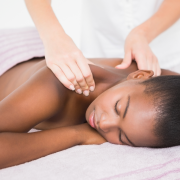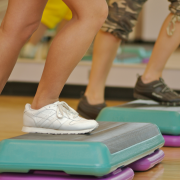What Is Massage? A Massage Therapist Explains
What is massage? That’s a big question. Anyone who has had a good massage will have a different answer. It’s something you have done once a year, on vacation, every month or twice a week. It’s for discomfort, relaxation, sports performance or flexibility. It’s a magical experience everyone looks at as the epitome of luxury, or it’s the bare necessity to cope with the stress of life.
Massage Can Improve Sports Performance
For those looking to improve their sports performance, massage can be an overall panacea. Blood flow improves with massage. More blood brings more oxygen, and more oxygen means your muscles can work that much harder, run that much faster, jump that much higher.
If you’ve suffered an injury, massage can make you recover that much faster, not only by improving blood flow but by removing adhesions that form between muscle sheaths, which would in turn limit your mobility. If you’ve overworked a muscle and it’s stuck in a shortened position, massage can help lengthen that muscle to its proper resting length so it can perform at its best.
In short, if you’re an athlete and you’re not receiving massages on a regular basis, you’re not performing at your best.
Related: What’s The Best Thing To Do For A Sore Body?
Sitting All Day? Massage Helps With That
Massage is the cure for the body stuck behind a desk all day. Your body’s natural position is standing. Everything works better and feels better in a standing position. If you sit at a desk for eight hours (or more) per day, you’re leaving your body in an unhealthy posture.

Starting at the top, your head slumps forward, tightening muscles on the top of your neck (which can potentially cause headaches). Your shoulders roll inward, shortening your pectoralis muscles and overstretching your rhomboids and middle trapezius in the back. Your spine can curve in any number of ways, none of which are particularly healthy. Hyperlordosis, hypolordosis, scoliosis: all of these are possibilities when your core muscles aren’t placed in a position where they can function properly. And then your hips are placed in a flexed position, meaning when you stand up they won’t want to lengthen, and instead they will stay short and pull your pelvis downward in the front. Massage can target all these problem areas and bring your body back to a perfectly functioning homeostasis.
Massage Helps You Manage Your Stress
If you are currently alive, then you are currently suffering from some level of stress. Global pandemic aside, there are mortgage payments, taxes, work deadlines, in-laws, doctor visits; pick your poison. When our bodies suffer from stress, they go into a sympathetic nervous system response, or a fight-or-flight mode. Your body has a physical reaction to an emotional problem, and when those stress hormones are allowed to run rampant in your bloodstream they do things as subtle as making your eyelid twitch and as not-so-subtle as shortening your lifespan. There are mountains of science about this, but ultimately the takeaway is: stress bad!
Related: 15 Ways To Decompress At Home
So just don’t be stressed? Is that the answer? No, but learning to cope with stress will dramatically improve your life. And what better way to cope with stress than with massage? Massage has the proven benefits of lowering cortisol and adrenaline levels in the bloodstream. Massage initiates a parasympathetic nervous system response, or a rest-and-digest mode. It’s not for nothing that your stomach usually rumbles towards the end of a massage. Your body has forgotten any thought of danger/stress and is ready to eat/relax.
Scientifically Speaking, What Is Massage?
At its most basic level, massage is a way to move heat around the body. That’s it. Simple, right? A qualified massage therapist puts their hands on their client, and with their hands they create heat between their hands and the person’s body. It’s just physics.
But what happens after is not so simple. That heat causes the body’s blood vessels to dilate, and dilated blood vessels allow more blood to flow, bringing more oxygen, more nutrients, and whisking away waste products to be cleansed and excreted.
The heat causes collagen to become more malleable. Collagen is one of the major connective tissues in the body, and the primary one in fascia, which surrounds all your muscles and muscle cells. Imagine kneading a lump of clay for a minute and how much easier it is to manipulate after. The muscles in your body react the same way, and all because of some well-placed heat.
The heat from another person’s hands causes a cascade of feel-good neurotransmitters to be released in the brain, too. It’s almost like our bodies want us to get a massage the way they reward us for it. Dopamine, serotonin, oxytocin; all are signaled to be let loose when your body is receiving therapeutic touch, and your brain then enters what scientists call pure bliss.
So what is massage?
Answering as a massage therapist; it’s a way for me to help you live your best life.

Post written by FFC Massage Therapist Jason VonGerichten.




